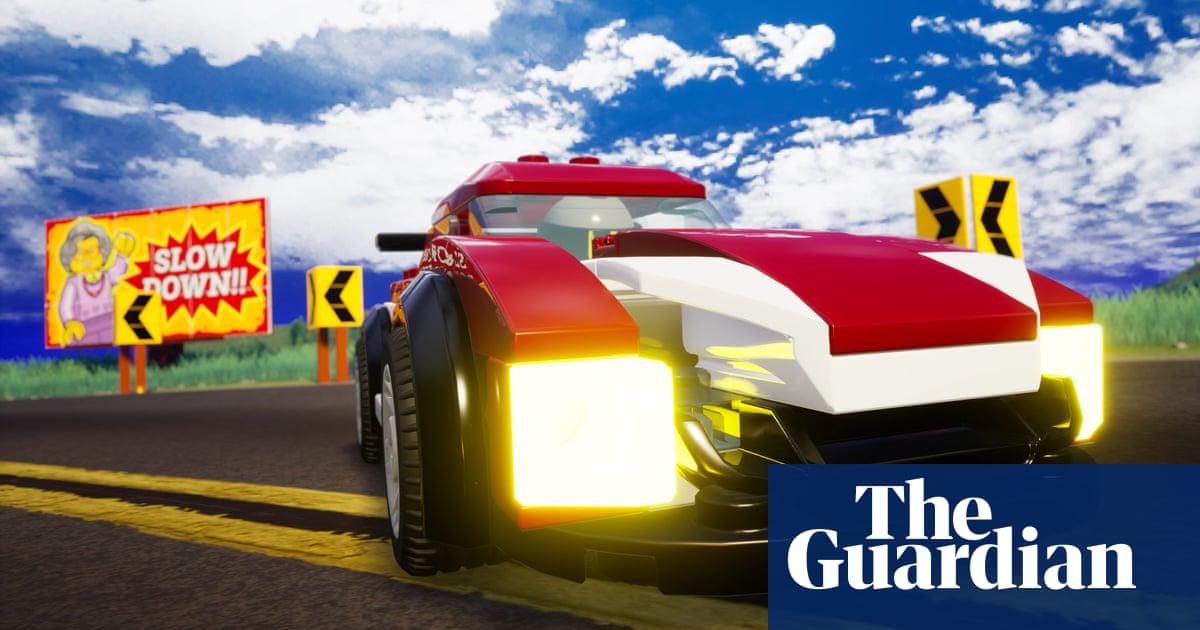
Classic video games never really die. While they’re still remembered by designers and producers, their influence lives on and they can crop up in the most unexpected places. 2K Games has announced a new agreement with Lego, which will begin with Lego 2K Drive, an open-world racing game created by veteran studio Visual Concepts. It combines the explorable world and discoverable challenges of Forza Horizon with the fun handling, weapons and power-ups of Mario Kart – but its origins lie in a completely different set of car games.
Executive producer Mark Pierce started his games career at Atari in the late 1980s, working on the company’s classic racers RoadBlasters, Road Riot and San Francisco Rush, and was around while another team was crafting the legendary 3D racing sim Hard Drivin’. “I was so fortunate because a lot of the original Atari guys were still there,” he recalls. “David Sheppard, who was the second software engineer hired and Peter Takaichi’s group who did all the mechanical design. I knew Jed Margolin, one of the guys who invented force feedback steering. It was incredible, the culture was just so strong, so creative … A lot of us at Visual Concepts South have a heritage in making arcade racing games. We really wanted to make an arcade-style game that would be easy to learn, but hard to master.”
Pierce’s ambition has been to bring the arcade design mentality of 1980s Atari to modern open-world racing game design. Players drive around the lusciously colourful world of Bricklandia, unlocking races, tasks and missions. There are Lego towns crammed with colourful shops and restaurants, Lego canyons and Lego farms (filled with cute Lego pigs). You can race through gothic castles populated by ghosts and giant spiders. Everywhere you go, mini figures wander about, often with little challenges to give to you. Playing an early demo of the game, I found myself jumping over rocky chasms, hunting down and retrieving lost characters and running over robot invasion forces. The story mode has lots of cut-scenes that capture the typical knockabout humour of the Lego movies and games.
The Atari influence can be most keenly felt in the super accessible handling model. There’s a big emphasis on drifting – tap the brake on entry to a corner and your backend readily glides out, allowing you to slide through acres of tarmac, controlling the angle with the analogue stick. There are three different surfaces to drive on – street, off-road and water – and, cleverly, your ride instantly transforms into the appropriate vehicle as soon as you need it: hurtle over a ramp into a river and your truck is suddenly a speedboat. This frictionless fun extends to collisions – most objects you hit, from fences to trees, explode into Lego bricks on impact without impeding your progress. Indeed, smashing stuff helps repair your own vehicle, so, just like in the Lego Star Wars games, breaking things is actively encouraged.
The fluidity and verticality of the game, where realism is readily eschewed in favour of stunts and thrills, really reminded me of Midway’s under-appreciated arcade racers of the 90s – the likes of the Cruis’n series and Hydro Thunder. Turns out, it’s not a coincidence. “We have Brian Silva and Steve Ranck at Visual Concepts – they both worked on Hydro Thunder,” Mark explains. “We all know that there’s a real skill, a real nuance, to understanding how you make something playful, how to ensure cars can drive up walls smoothly, how you make it fun to smash into stuff. It’s buttery – you just go through things … [tuning racing games is] a long, iterative process, it’s a kind of craftsmanship.”
Throughout the world are shops where you can buy new clothing and custom items for your vehicle and driver. The game also has an in-depth construction mode where you can build your own vehicles from scratch using around a thousand different Lego bricks, as well as stickers. Apparently, you’ll be able to modify ready-made vehicles, too, and although 2K wouldn’t confirm it, it’s likely that creators will be able to share their custom designs with other players.
As for power-ups, we’re definitely in Mario Kart territory. During races, you can pick up homing missions, speed boosts and a cloaking device, as well as spider webs that act like Mario Kart’s ink stains, obscuring the screen for other drivers. The tournament structure is also familiar, a series of cup events where races are tiered by difficulty. 2K is promising six-player competitive online racing, but there’s also split-screen for both cooperative and competitive local multiplayer.
It’s been 20 years since US developer High Voltage Software released Lego Racers, a driving sim that combined the knockabout gameplay of Mario Kart with the visual style and construction possibilities of Lego. A sequel followed a couple of years later, but somehow the compelling idea of a build-it-yourself Lego racing game fell by the wayside as Traveller’s Tales bombarded the market with its excellent Lego movie tie-ins. Now it’s back – and it’s nice to see that in such a huge, highly branded new family game, the legacy of some cult 1980s and 90s arcade greats lives on.
Lego 2K Drive is released on 19 May for PC, PS4/5, Xbox and Nintendo Switch












